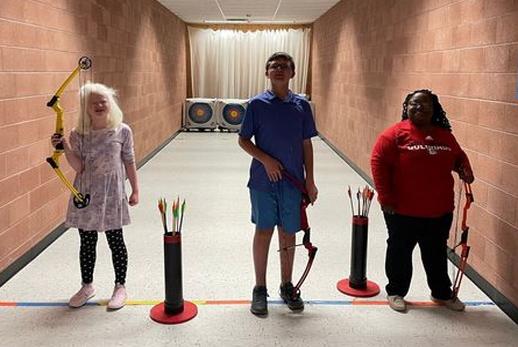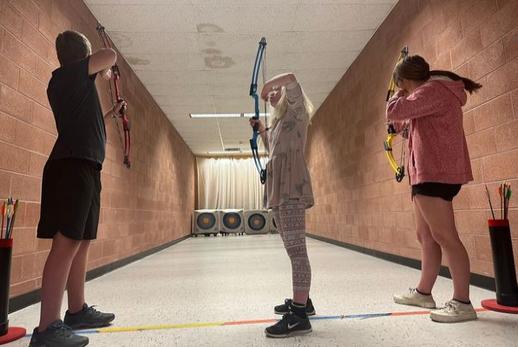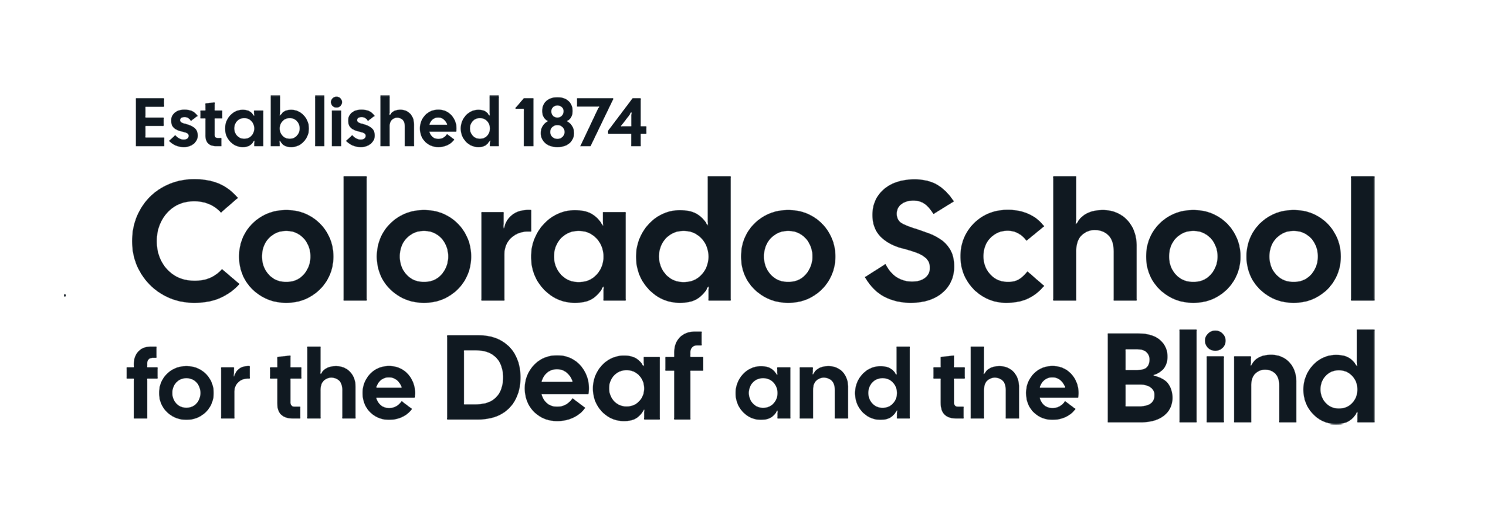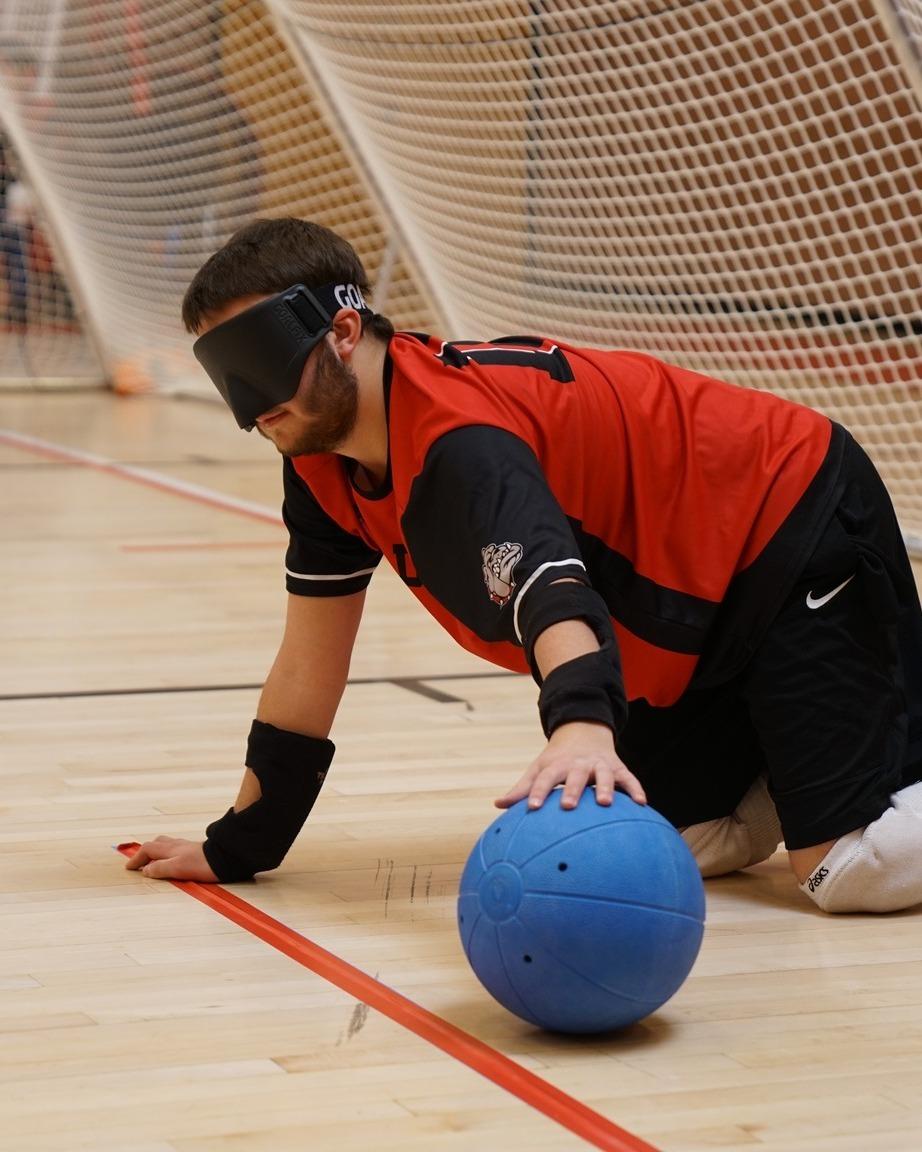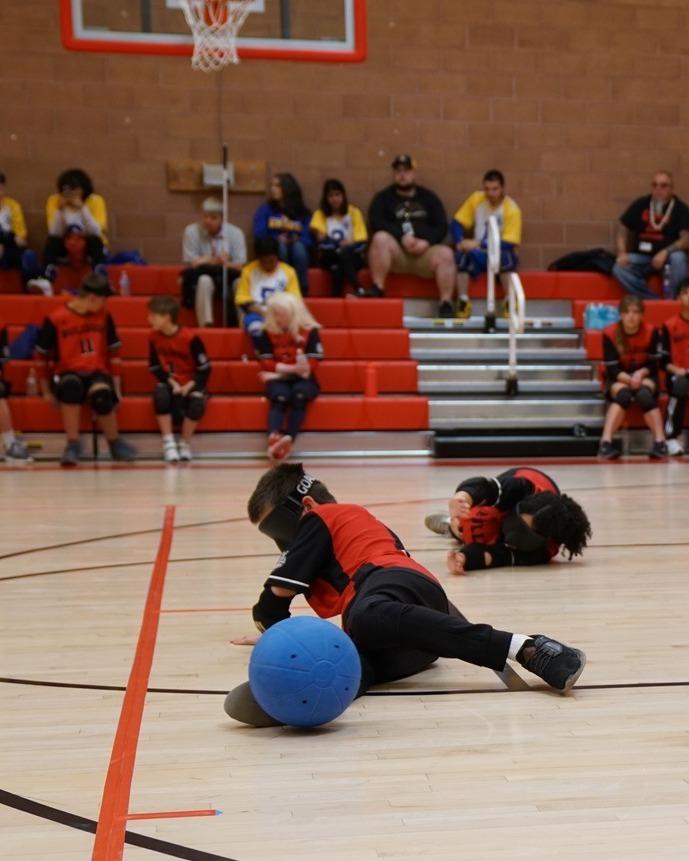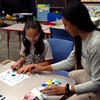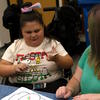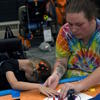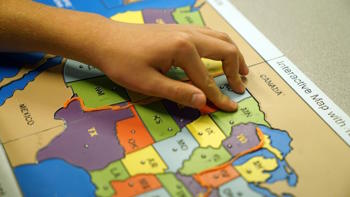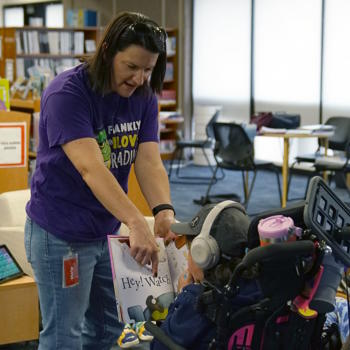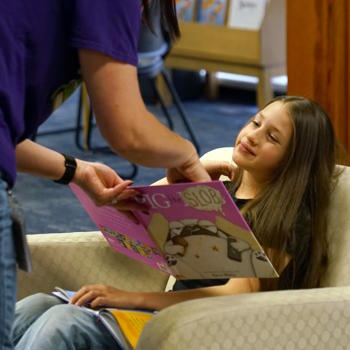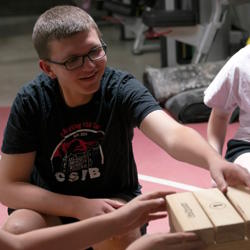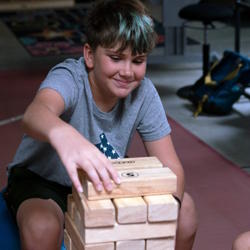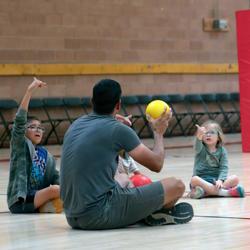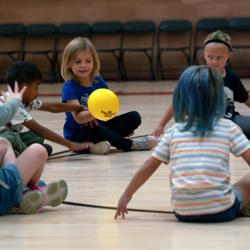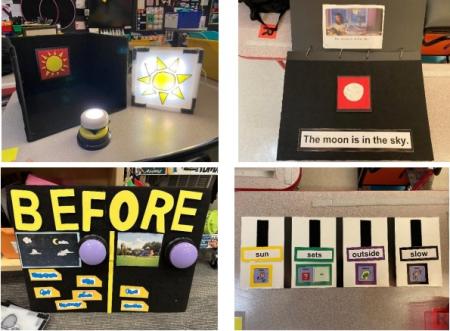What's Happening in the School for the Blind
November 2024


The staff and students kicked off the School for the Blind homecoming weekend with a pep rally in the gym. Students celebrated the CSDB goalball team and homecoming court, and the band played a few tunes for an enthusiastic crowd!
November 2024
The students in the School for the Blind competed in a spelling bee. In this video, several students compete in the syllable competition, then students in elementary and middle school try their hand at the spelling competition.
October 2024
Students in Ms. Avery's class in the School for the Blind spent the last part of their day decorating paper pumpkins with tactile stickers. Students helped pick out their favorite stickers and practiced taking the paper from the back. They also worked on spelling their names with letter stickers.
September 2024
September 2024
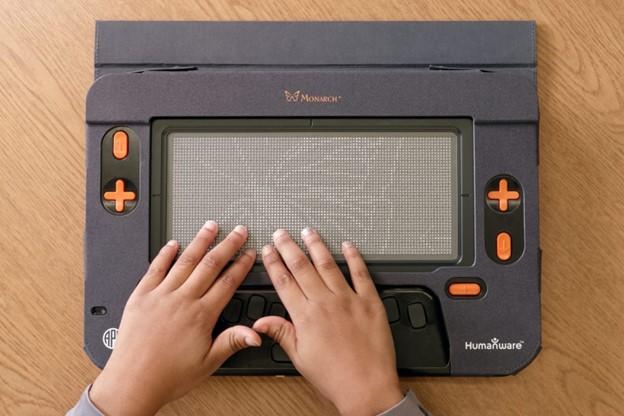
In fall 2023, CSDB was chosen as a test site for the new Monarch refreshable braille display. Students at the School for the Blind were excited to try out this new device being developed by the American Printing House for the Blind (APH) and Humanware. They loved the instant access to graphics. A braille version of a textbook containing text and graphics could fill more than 20 volumes and range from $500-$1500 per copy from a vendor; in contrast, with the Monarch, textbooks can be downloaded directly with instant access to the text and the graphics. CSDB now has full-time access to a Monarch and the students can’t wait to test it further.
The Monarch is about the size of a 15-inch gaming laptop and weighs about 4.5 pounds. It features a braille keyboard and a 10-line, 32-cell refreshable braille display that gives students instant access to text and tactile graphics. One of the included apps is the Tactile Viewer, which enables users to quickly look at graphics on the device, on a USB thumb drive, or access them through APH’s free online Tactile Graphics Image Library.
Another exciting feature is math access. Students will be able to work on multiple-line spatial math problems and access the Desmos graphing calculator. They can also increase their braille reading fluency as they download Bookshare books in the Victor Reader app and read multiple lines of braille before panning to the next section. In addition, teachers, parents, and peers can see what the student is doing on the Monarch via a connected visual display monitor.
Planned future updates include a tactile chess game, a braille terminal app for pairing the Monarch with computers, tablets, and phones, and a new drawing app that will enable teachers to draw a graphic and produce it on the Monarch for the student to reference.
You can read more about the Monarch in this article. You check out the following videos to learn more about the Monarch:
July 2024
Jaimie Lugo, School for the Blind Principal, and her son traveled to Los Angeles to work at the National Braille Challenge finals. Finalists and their families, from across the globe; the United States, Canada, the United Kingdom, and Australia competed on this special day.
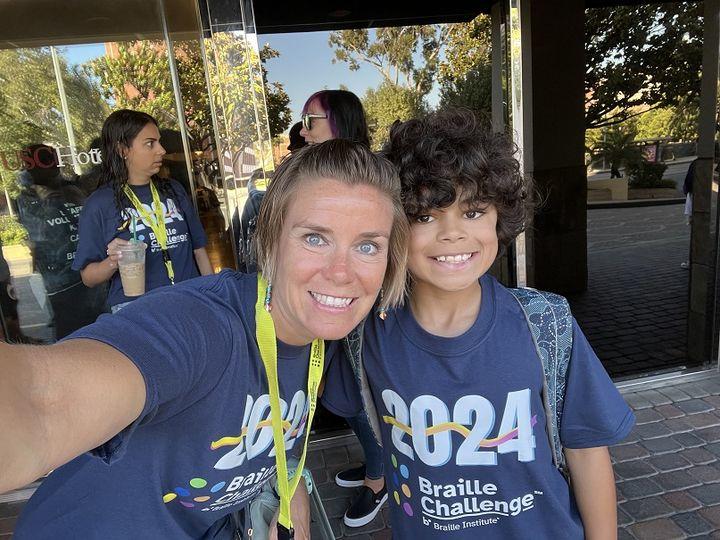
June 2024
Minnie, a student in the School for the Blind, created this :60 video of her classmates during class. Check out the fun the students are having!
June 2024

June 2024
Dorm students who are Blind/Visually Impaired enjoyed swimming at a local YMCA. They explored the water park area, hot tub, and, waterslide! Although some of our students had never tried one before, they tackled the waterslide like old pros! Get inspired, go out there, and try something new this summer!!
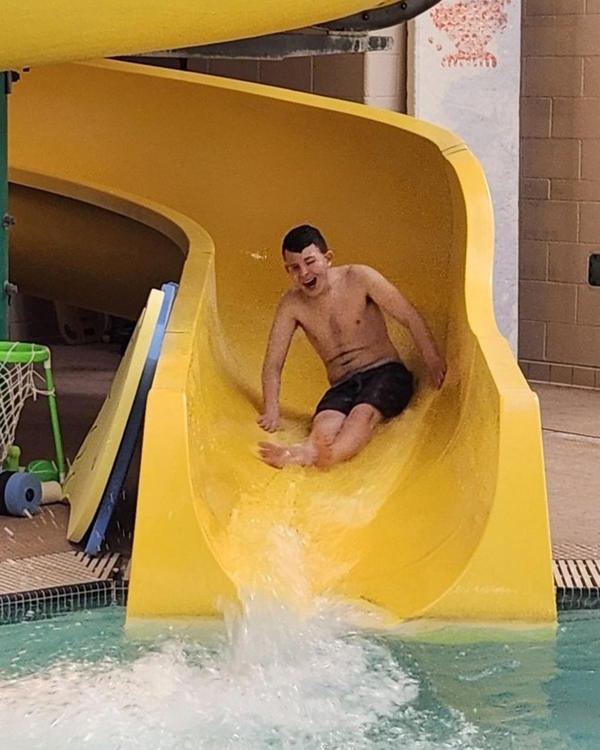
June 2024
CSDB hosted a bike-riding extravaganza, with partners Kids on Bikes and AngleTech, for the students in the School for the Blind. The students were able to experience a variety of tandem bikes and rode with staff and volunteers.
Check out more photos from the event!
June 2024
This week, the elementary science classes used vinegar to hatch frozen baking soda dinosaur eggs. Thanks to Shannon Lovern, TVI Science, for sharing!
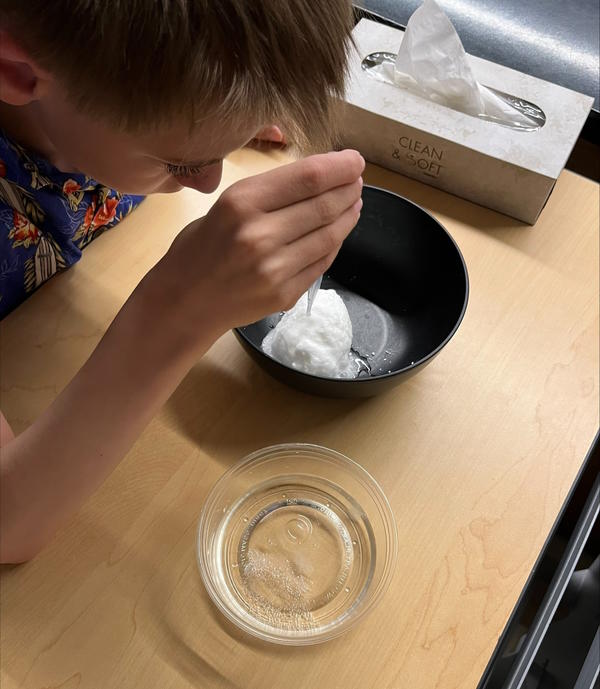
May 2024

May 2024
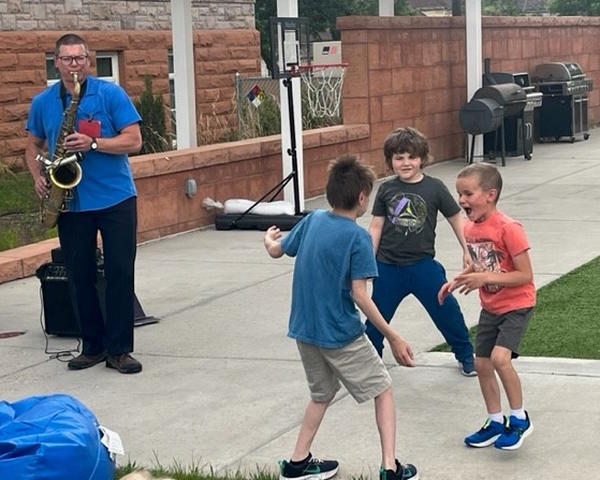
May 2024
May 2024
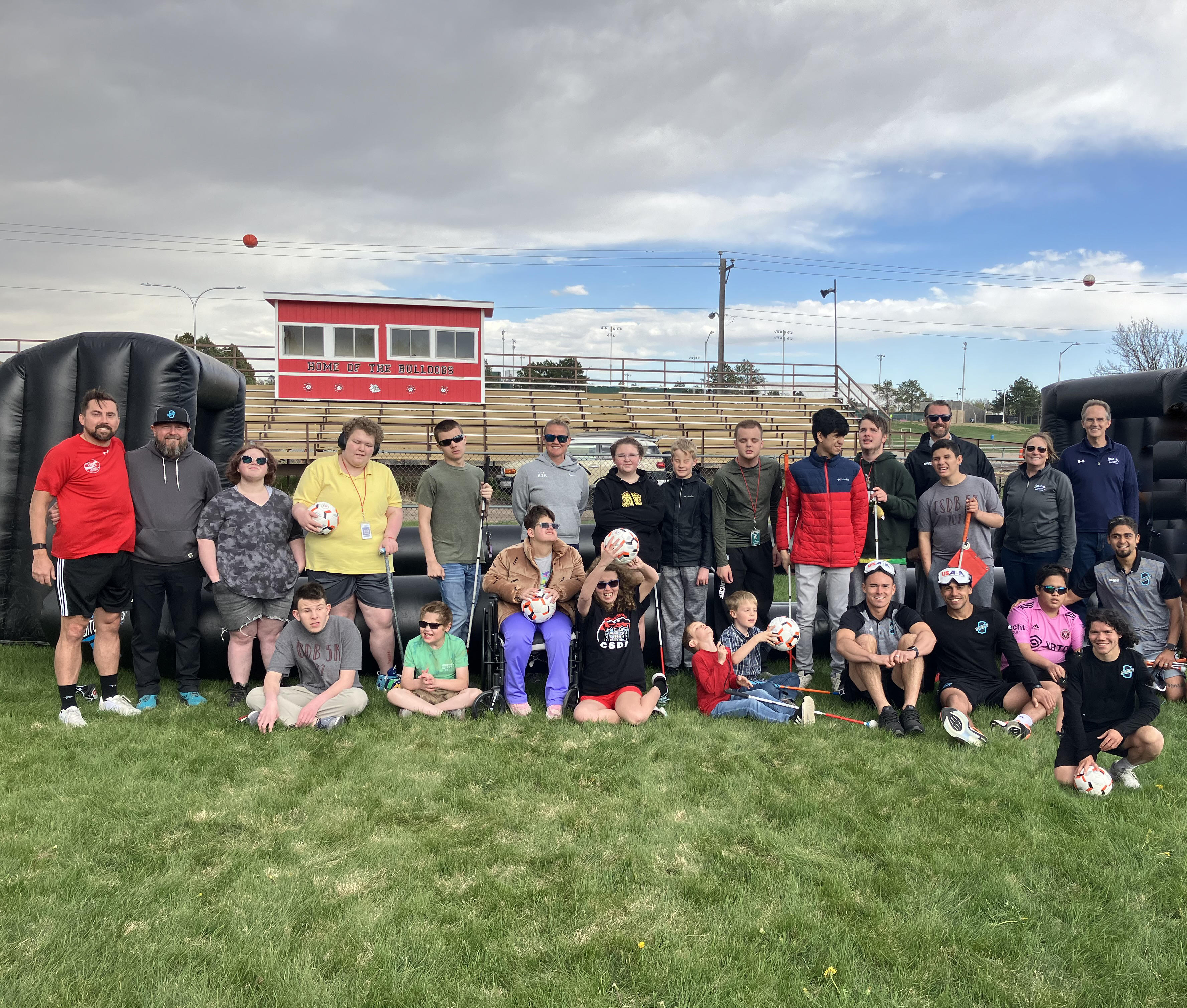
April 2024

April 2024
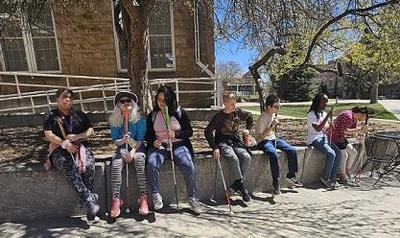
In the School for The Blind, students in Mrs. Chanelle’s class work to make literacy learning as interactive as possible. Our middle schoolers have been working hard on learning to understand specific spelling rules and putting them to real world use. Students are encouraged to demonstrate their learning and understanding outside of the classroom during literacy nature walks and scavenger hunts. Scavenger hunts in the building require students to communicate and work together to search for and find words throughout the building that match specific spelling patterns on their find list. Some patterns include words containing diagraphs, prefixes, suffixes, open vs closed syllable words along with many others.
During their outside literacy lessons, students are encouraged to travel from place to place with their class and spend a few minutes at each stop to simply sit, listen to, and feel the things around them. They identify the sounds they hear and things they feel and are encouraged to provide a one-word description. They then work to identify spelling patterns within those specific words. This has proven to be not only a valuable way to demonstrate their knowledge but a way to have fun while learning as well.
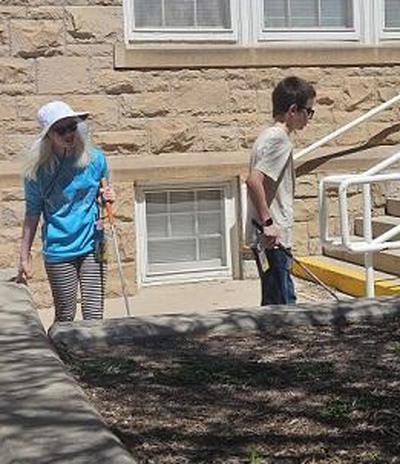
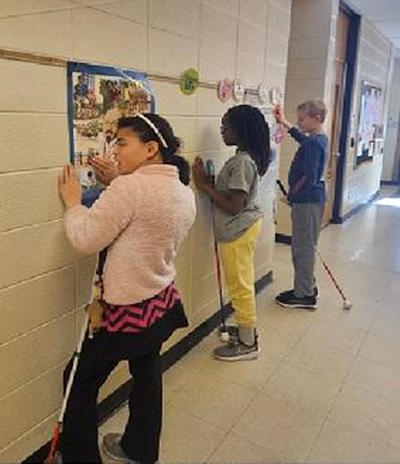
Written by Chanelle LeVack, Literacy Coach, CSDB School for the Blind
April 2024
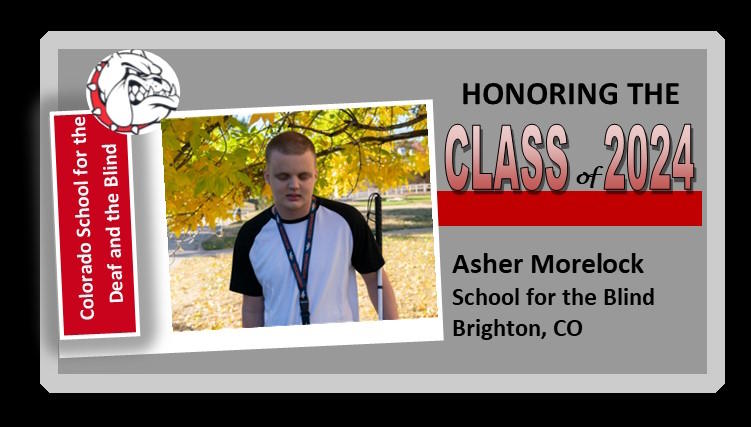
March 2024
Three students, in the School for the Blind, competed at the Regional Oratorical Contest hosted by Optimist International last week. All students did a great job. Mikayla (right photo) won first place and will advance to the next round! Congratulations, Bulldogs.
Image: left, a female student speaks at a podium with the Academy Optimist Club banner at her right; right, a female speaks at a podium.
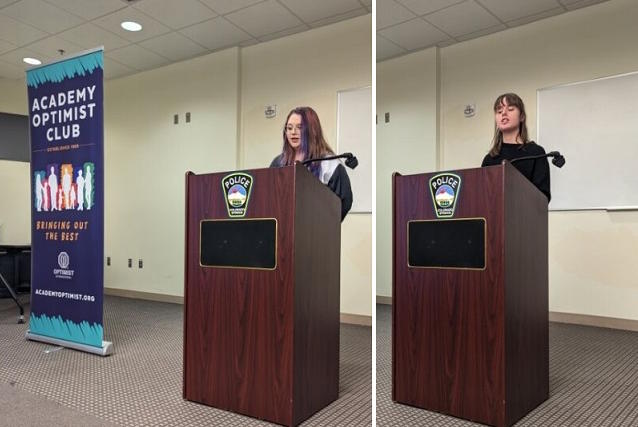
March 2024
All aboard for the Enchanted Hills Camp in CA! It's Spring Break and this group of five students and one staff member, from the School for the Blind, will spend their time in the blindness skills immersion training. The airlines was fantastic and gave hands on demonstrations of all safety procedures!
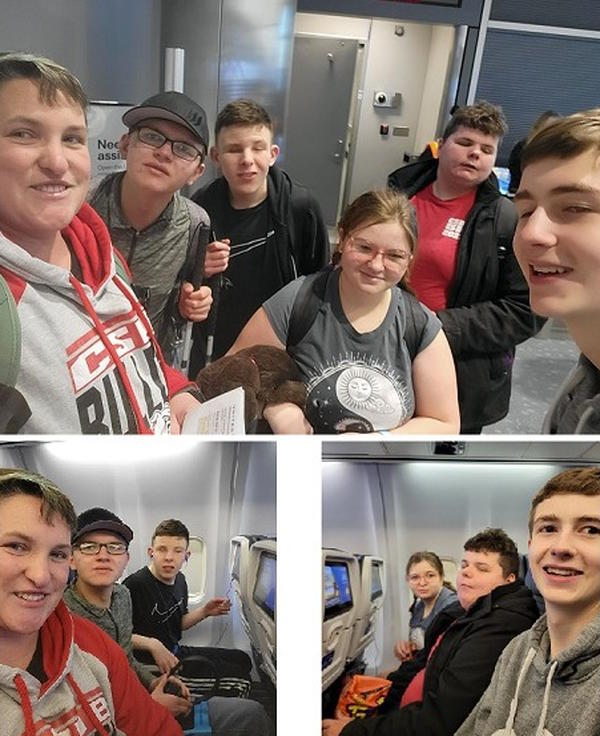
March 2024
Seamus, a freshman in the School for the Blind, represented CSDB at the Deafblind Limitless Conference. He participated in the Closing Ceremony as a panelist. The panel was asked thought-provoking questions that centered around Assistive Technology & Education, Instructional Support, as well as Promoting Literacy & Language. Seamus represented the school with all aspects of PRIDE and he mentioned how fun the experience was for him.
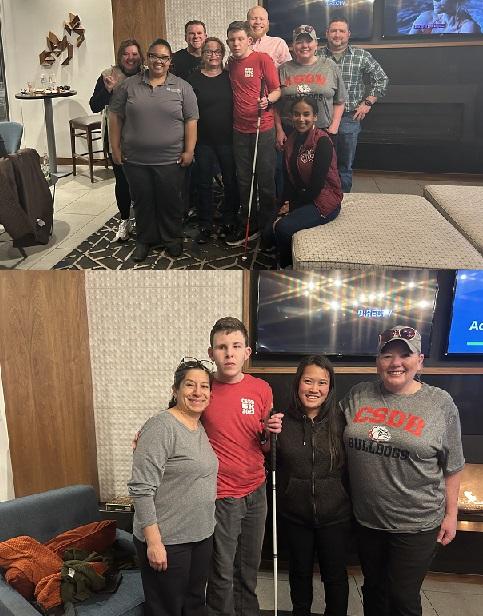
March 2024
Students, in the School for the Blind, just returned from their annual ski trip to Crested Butte, CO with the Adaptive Sports Center (ASC). https://csdb.colorado.gov/crested-butte-ski-trip
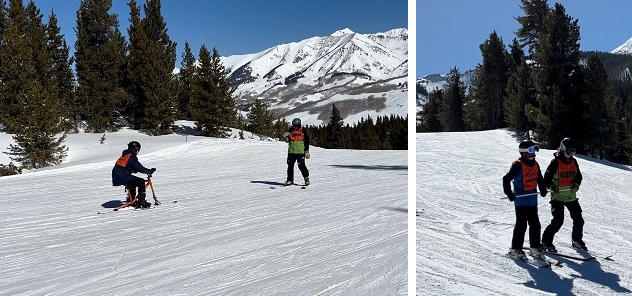
March 2024

February 2024
February 2024
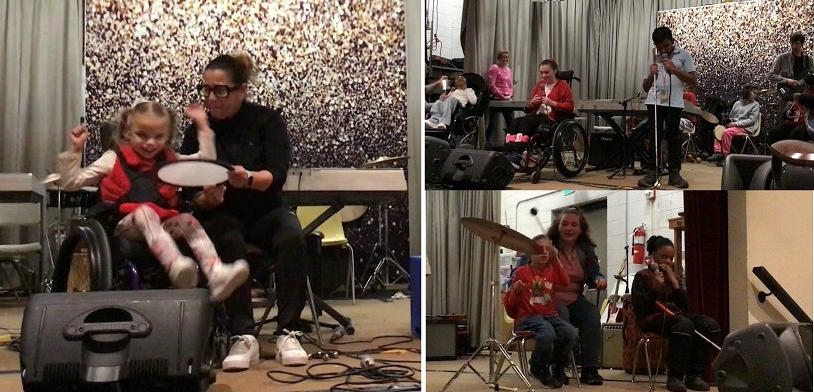
February 2024
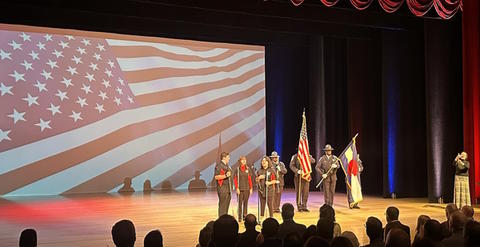
Three CSDB students, in the School for the Blind, were honored to be asked to sing the National Anthem at the El Paso County State of the Region, this morning. Great job, trio!!
________________________________________________________________
From the EPC Sheriff's Office:
The El Paso County Sheriff's Office Honor Guard conducted a Presentation of the Colour, alongside students from the Colorado School for the Deaf and Blind- who sang our national anthem at the State of the Region for El Paso County, Colorado.
El Paso County is a wonderful place to work, live, and raise a family- and it is our honor to serve and protect the citizens who call it home.
Thank you to the Colorado Springs Chamber & EDC for hosting a great event- and to all of the community members and business owners who attended.
We love where we live and serve.
January 2024
Blind skiers on the hill? Yep, through the great work of Foresight Ski Guides, some CSDB students, in the School for the Blind, experienced skiing, last week. One of the boys, who is blind, had his father along. At the end of the trip, the boy piped up, "I learned to ski! I can do a sport with my dad now." What a great impact!
Photos courtesy of Cara Johnson, School for the Blind School Psychologist (Thanks Cara!)
[Image: collage - upper left boy and 2 adults wearing ski vests, chat inside; top right, boy and male ski guide on the slopes for instruction; lower left, girls wearing goggles, a ski vest and gloves poses inside; lower right, a girl and a ski guide face each other using the snow plow while outside on the slope.]
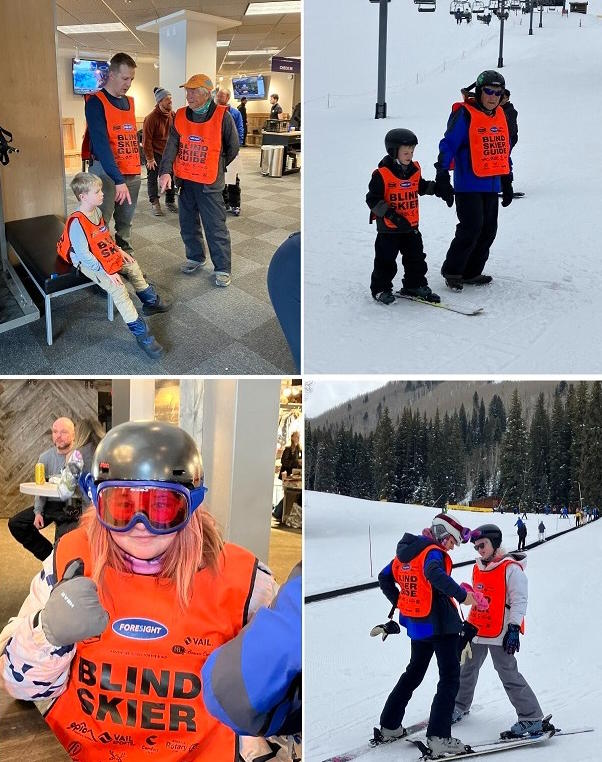
December 2023
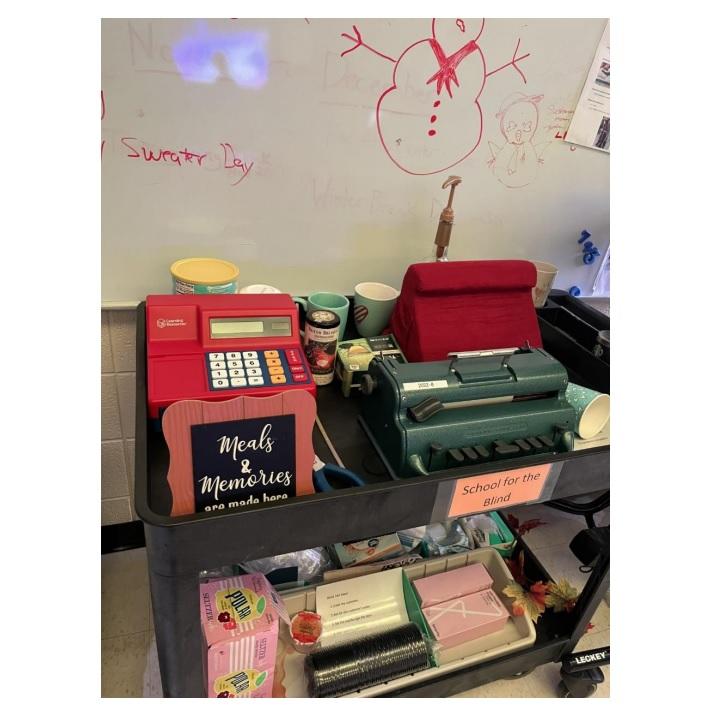
December 2023
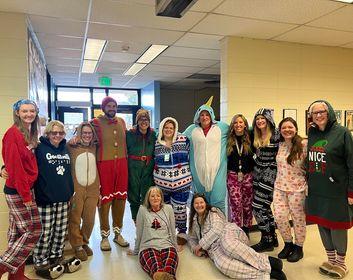
November 2023
The young scientists in the CSDB Adams Building have been busy this first quarter with a multitude of investigations, experiments, and observations. Students incorporated literacy by writing a song, a rap, or a poem about renewable resources and the importance they have for sustaining life. Below is one of the poems:
Renewable Resources
Renewable resources, the resources of our Earth.
We need them from our birth.
Rain showers give us flowers,
But it also gives us powers.
Sun rays hit uneven ground,
Creating wind all around.
If the sun grows old,
It turns red and is enough to wake the dead.
The scientists have also used their understanding of the germination process and planted sunflower seeds and/or pumpkin seeds. They have tended to them and watched them sprout. Additionally, experiments and observations are in full swing. They’ve implemented the scientific method and are currently in the data collection phase. Soon they will be able to answer their questions, can a plant grow with only a disco ball for light? And, which will affect the penny more, soda or toothpaste?
The image below is from a field trip that the Adams scientists went on. They were invited to participate in the National Federation for the Blind of Colorado State Convention in Denver. The focus for the day was Science and Health and Wellness. The young scientists participated in exploring tactile art and dry ice experiments. They learned a valuable lesson that science can sometimes be unpredictable, but even when an experiment does not go as planned, they learn and observe and can use those observations to try again.
Written by Shannon Lovern, School for the Blind Science TVI
November 2023
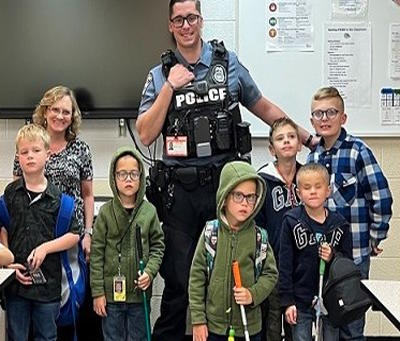
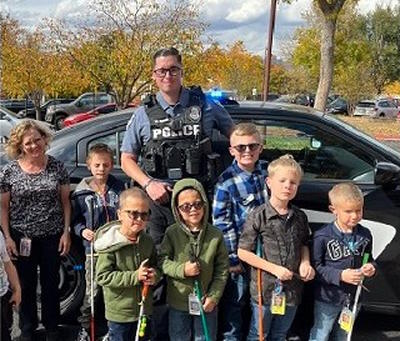
November 2023
The young scientists in the CSDB Adams Building have been busy this first quarter with a multitude of investigations, experiments, and observations. https://csdb.colorado.gov/adams-building-scientists
[Image: Student touching bubbles created from dry ice, water, and dish soap. ]
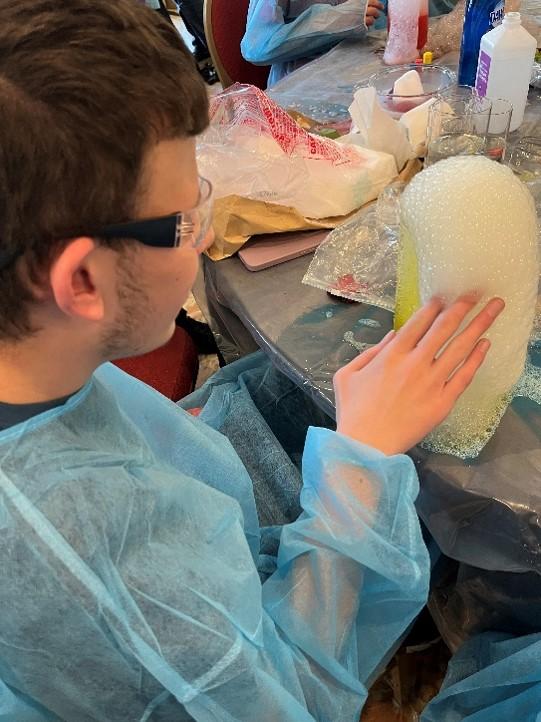
October 2023
CSDB School for the Blind Principal Jamie Lugo was honored with the Outstanding Principal Award by the Council of Schools & Services for the Blind (COSB) at its annual Leadership Institute. CSDB Interim Superintendent, Tera Spangler, nominated Jamie for this prestigious award, which was presented at the COSB Annual Awards Banquet by Cheryl Austin, Dean of Students, CSDB School for the Blind.
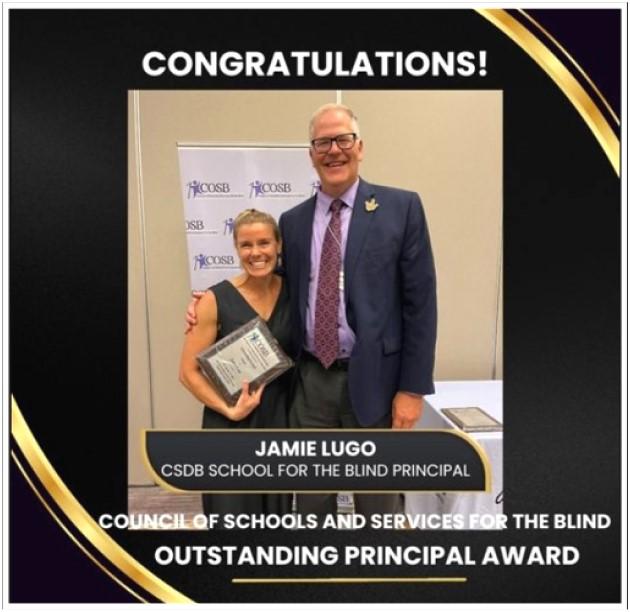
October 2023
The Adams Elementary team is extremely passionate about promoting inclusivity, unity, and equity among all of the K-5th-grade students. We model what that looks like in hopes of students mirroring that behavior as well. To support that philosophy, we also advocated to have 1 co-taught content class with our elementary special education program. Aside from having our entire elementary program together any chance we get, we have now been co-teaching literacy every day (Grace Gundel & Liz Arnquist) and co-teaching math every day (Jerred Sonneborn & Liz Arnquist). However, this article is about the co-taught literacy class.
This class was created around the Comprehensive Emergent Literacy Model. We have been co-teaching this class for 3 years now and it has evolved and taken many forms over the years. However, this year, we are really excited to make literacy accessible for all students. The combination of special education and blind-specific teaching strategies being implemented is giving students access to literacy in a way that is totally accommodating to the student’s needs. Accessible literacy doesn’t only benefit the students in our special education program.
Accessible literacy is where it starts. Giving students opportunities to derive meaning and information using their hands is where it begins. Teaching students how to use their residual vision to derive meaning from the world around them is where it begins. That is how we make literacy accessible to students. All children have the right to read and love reading. It’s our job and responsibility to present it on a level that is accessible to all students in the way that they need it.
Picture Description (top left): A CVI-friendly foam picture of the sun is velcroed to a black felt tri-board. The sun is yellow and the background is red. To the right of that picture is a see-through picture of the sun velcroed to a homemade hand-held lightbox (made by Mr. Jerred, helping our ideas come to life!) with two handles on either side. In front of both of those versions of the sun is a recordable button with a puck light tactile symbol velcroed to the top. These are all versions of the word ‘sun’ to be used during the pre[1]teaching phase of our literacy lessons. Picture Description (top right): A homemade felt book has a CVI-friendly foam picture of the moon. The moon is white on a red background. The sentence reads underneath, ‘The moon is in the sky.’ Above the adapted page of the story is the actual page in the story that has been adapted for the students to access.
Written by Grace Gundel and Liz Arnquist, CSDB School for the Blind Teachers of the Visually Impaired
October 2023
Student self-assessment is an integral part of the learning process and a skill that will help students continue learning after they graduate. Based on each student’s self-assessment, they can identify if they need help with part of an assignment. As the teacher, I can also use this data to plan follow-up or extension lessons. https://csdb.colorado.gov/self-assessment-in-the-english...
Written by Emma Avery, Secondary Language Arts TVI, School for the Blind
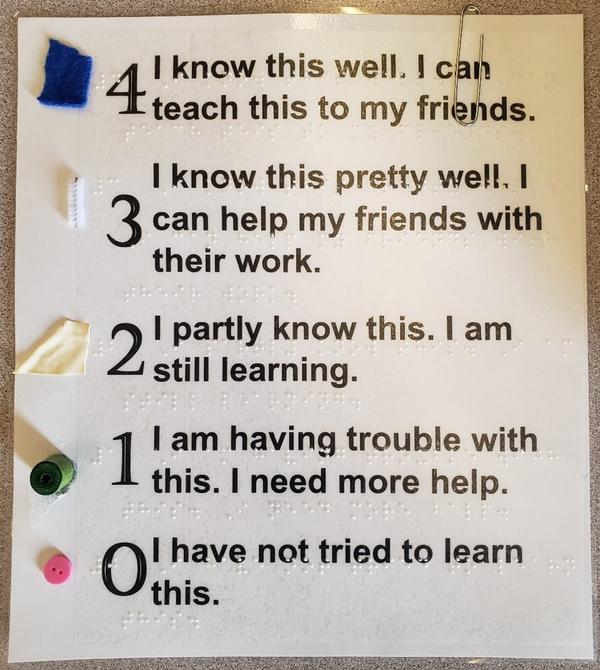
September 2023
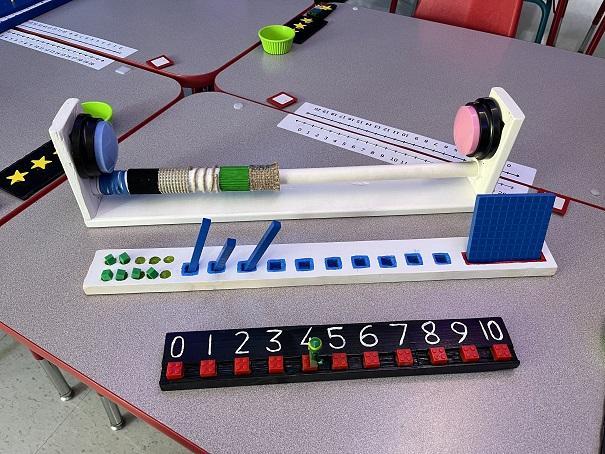
The most entertaining aspect of working in the vision field and special education is utilizing my creative traits. One of the privileges of working at CSDB is the access I have to the abundance of adapted math tools that I can provide to my students. However, there are times when I must dive deeper into the adaptation of tools to accommodate the needs of students.
Recently, I have taken a step back to observe what needs must be met to obtain student motivation, accessibility, success, and understanding. I look for the gaps and struggles a student may have using a tool and think how can I make this more accessible for them? For this to come to light, I first focus on the motivation piece. What will draw a student to enjoy this tool but also provide the input needed to understand the topic presented? What can I do to make this tool stimulating enough to keep the student engaged but also understand its purpose? When those questions are answered, I then proceed to create a tool that is adapted to their physical needs. Finally, I figured out what I needed to create for the content to make sense to the students and appropriate contrast for the students using the tool which lead to success.
The most recent tools that I have adapted/created pertain to one-to-one correspondence, place value, and addition/subtraction as seen in the photo.
Tool 1 (far back) is a universal counter. This tool allows the student to manipulate the counters with control and emphasizes the concept of sliding to the right for addition and left for subtraction like on a number line as well as organization for 1:1 correspondence. The buttons are voice recorders where I will record “plus one” and “minus one” or whatever vocabulary I want to target that day. The buttons serve as the motivation piece for the student who uses this tool. Each counter is also a different texture for both tactile stimulation and to emphasize that each number is different in value. An example of how this tool is used is the student is given an operation and a number (+2). They will slide one counter at a time to the right and hit the button each time being reinforced with the language of “plus one” or “one more.” This tool can be used as well for
Tool 2 (middle) is a place value base-10 block holder. Each block type has designated slots that will only allow the designated block to fit in the slot. Each place value is color-coordinated to the assigned clock to provide the student with that visual aid. What inspired this creation is that a student loves to stand the blocks upright but does not have the fine motor control to do so. The slots allow for the student to set the blocks up in their desired way and stay organized.
Tool 3 (front) is a number line with LEGOs at each number on the line with a LEGO person as a placeholder. This tool is used for counting, addition and subtraction, and rounding. The idea behind this tool is to make a fun and play-based twist on a typical number line, a tool that I readily use especially with our younger students. This also puts an emphasis on fine motor skills.
Written by Jerred Sonneborn, CSDB School for the Blind TVI
September 2023
Concrete Coyote Concrete Couch hosted our School for the Blind high school students, once again.
Students toured the property, learned about different varieties of wood (smelled pine and cedar to see if they could distinguish the type of wood) and explored the tactile kiosk made by our former CSDB students. Then, this group created more tactile tiles out of clay to add to the kiosk. They also learned to use tools such as electric screwdrivers, screws, and drills to put together wooden sculptures they created.
What a great experience for our students! Thank you, Concrete Couch!
Thanks to Jennifer Holt, CSDB School for the Blind TVI, for sharing the photos and story
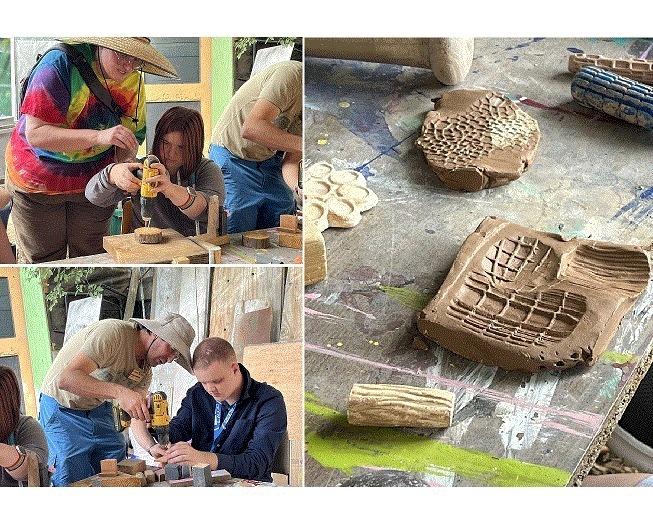
June 2023
Awesome video on the topic of Blind Awareness, created by the CSDB Media Production team.
May 2023
CSDB students, who are blind/visually impaired, visited the Bear Creek Nature Center VIP Trail, in El Paso County, CO, to test out the new audio signage, using a Pen Friend. Overall, students said the audio signage made the trail 100% better, and then they offered a few suggestions that the trail guide recorded. Such a great experience for our students to use an accessible trail and advocate for themselves!
Bear Creek Nature Center & Fountain Creek Nature Center El Paso County, Colorado
[top left and center, students walk along a trail using their canes; top right, students and staff follow a rope to the signage; lower left and center, students use a Pen Friend scan the signage and activate the voice; lower right, male student listens to his Pen Friend, text "Bear Creek Nature Center VIP Trail]
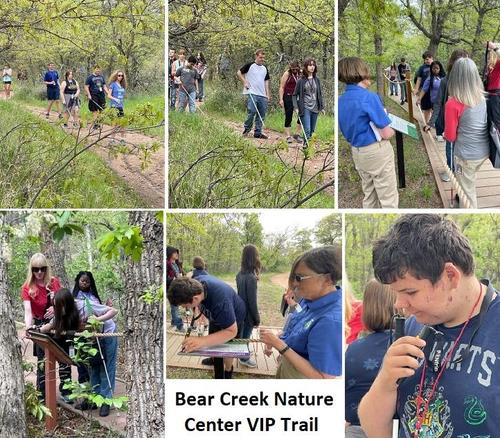
May 2023
Over the past 8 weeks, students in the school for the blind have been participating in an afterschool archery program. Students have learned the 11 steps to archery success through the National Archery In the Schools (NASP) program. Students learned about archery safety, range setup, and how to shoot a compound bow.
